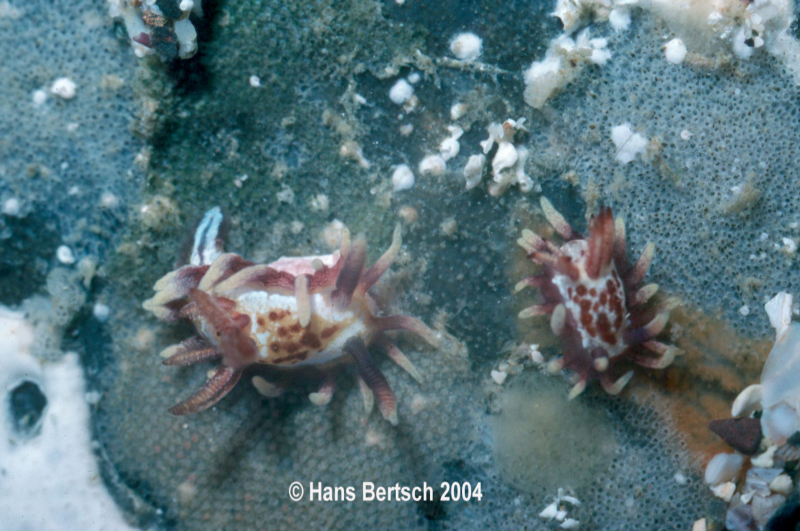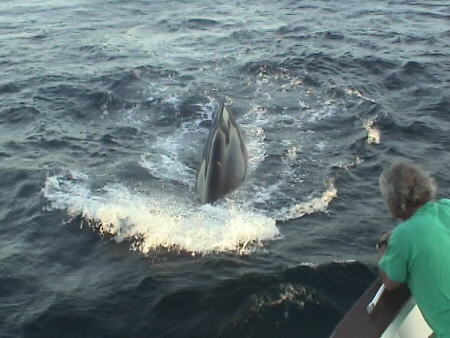 |
Okenia angelica
Each animal approximately 13 mm long; collected at Punta la Gringa, Bahía de los Ángeles, 21 September 1985Photo taken under captive conditions
Photo courtesy of Dr. Hans Bertsch
Okenia angelica
Gosliner & Bertsch, 2004It was early October 1984, a hot, sunny day in Bahía de los Ángeles. This morning there was no wind to cool us, nor evaporate the sweat. The dirt road to Punta la Gringa was empty of vehicles, giving us a quick drive to the scene. My partners (Terrence Gosliner, Antonio J. Ferreira, Robert van Syoc, Dave Mulliner, et al.) and I were working the day shift—a scuba dive on the rocky reef that extends to about 25 feet deep. My name’s Bertsch. I’m a nudibranchologist.
That was a memorable trip, camping in the unprotected, baking-heat barrenness in a small dirt valley facing the Sea of Cortez, and surrounded landward by several hills. We had a 5 gallon bucket of fresh water that could only be used to dunk our regulators and cameras into, removing salt from our most important items. Periodically we would go into town to eat dinner at Las Hamacas Restaurant.
Of special note, we saw a swimming Flabellina cynara and collected the holotype and 4 paratypes of the multi-hued and exquisitely handsome Bajaeolis bertschi .
It was on this trip that Terry and I saw our first specimens of Okenia angelica. The living animals are deep purple, with an extensive (but variable in size and shape) opaque white patch in the center of the notum. Details on the external and internal anatomy can be found in "Systematics of Okenia from the Pacific coast of North America (Nudibranchia: Goniodoridae) with descriptions of three new species," Proceedings Calif. Acad. Sci. 55 (52): 414-430.
Not all that much is known about its natural history. At Bahía de los Ángeles it has distinctly variable annual and seasonal cycles (Gosliner & Bertsch, 2004: Tables 1 and 2). Most likely this species feeds on encrusting bryozoans . The white egg mass is a thick cylindrical coil of approximately 1.25–1.5 whorls (here illustrated for the first time).
It is reported from Isla Cedros (Pacific coast of the Baja California peninsula), San Carlos, Sonora, and Bahía de los Ángeles (inside the Sea of Cortez), and from Bahía de Banderas, Jalisco (Pacific coast of southern Mexico).
Imperial Beach, Calif
Jan. 2005

Hans observing Fin Whale |
